Southwest Michigan field crops update - September 1, 2022
With no rainfall in the forecast and above-normal temperatures for the coming week, grain fill could be weakened in most parts of the region. The good news: these dry conditions will also keep disease severity low, hopefully until yield has been set.

Weather
Temperatures during the last week near normal. We accumulated 15 fewer GDD50 less than the 5-year normal in August—less than one day’s worth—in southwest and south-central Michigan according to Enviroweather data. We picked up 200 growing degree days (GDD, base 40 for alfalfa) or 130 GDD50 (for corn and soybean) last week. The forecasted reference evapotranspiration (FRET) rate is roughly 1.1-1.2 inches for the week ending Sep. 7. The forecast predicts the addition of another 216 GDD40 or 146 GDD50 in the coming week. Both the 6-10 day and 8-14 day outlooks call for above-normal temperatures during the first half of September.
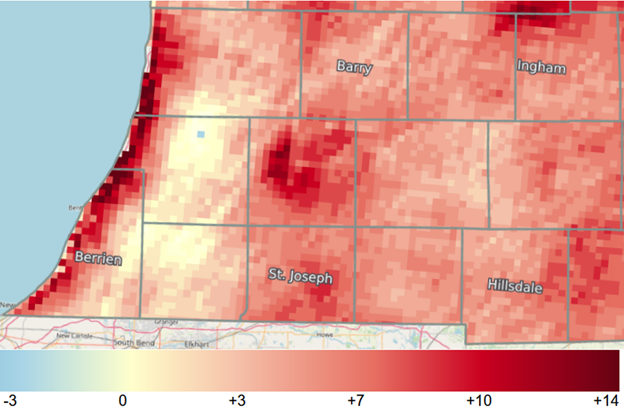
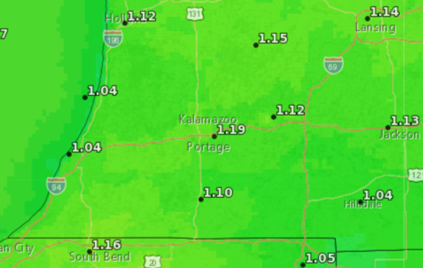
Precipitation was low in most parts of the region this past week with most counties averaging between 0.5-1.0 inch. Aside from Calhoun, Branch and small portions of a few other counties, rainfall has been 0.5 to as much as 2.0 inches below normal over the past two weeks. The medium-range outlooks call for below normal to near-normal chances of precipitation during the second week of September.

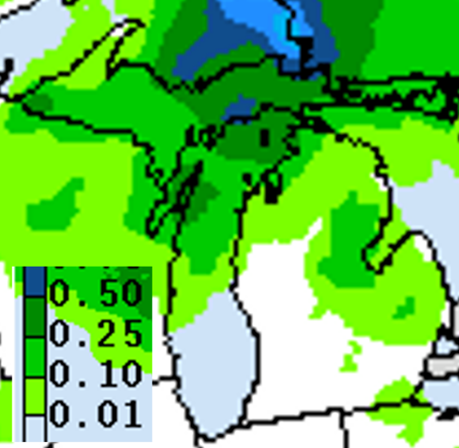
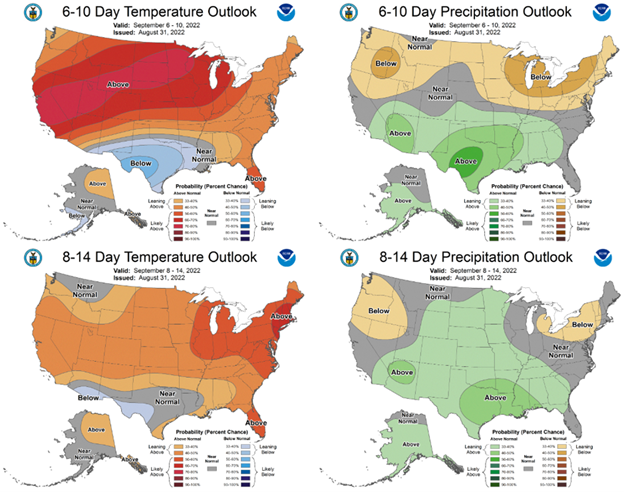
Crops and Pests
Corn and soybean continue to look healthy in the parts of the region visited although I did not travel to the extreme southwest part of the state. Corn in more advanced fields is well into the dent stage (R5) with one field visited at 50% milk line. Many seed corn fields have had a defoliant applied to them and harvest began in a few fields this week. Soybean in earlier-planted and early maturity group fields are turning yellow and starting to drop leaves while most are still at the full seed stage (R6, pod containing a green seed that fills the pod capacity at one of the four uppermost nodes on the main stem). No plants that I saw had any pods that had reached mature color.
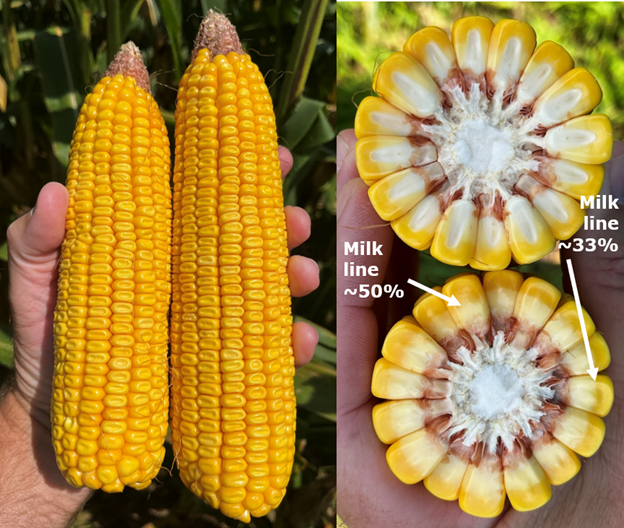
Diseases
With the dry conditions recently, incidence of tar spot has remained low throughout the region, and the tar spotter app shows mostly low risk of the disease for corn that has not yet reached the dent stage. The situation in soybean is similar with no white mold seen in fields visited and with few to no remaining flowers, the threat of that disease is also extremely low given the current forecast. The only diseases seen to date are Septoria brown spot (not normally a concern) and sudden death syndrome (SDS) in several soybean fields. As mentioned previously, scout now before the normal leaf color change occurs in your fields to identify incidence and severity of SDS and make appropriate variety and seed treatment decisions for next year.


Irrigation
Corn at reproductive stages through beginning dent has a Kc of 1.2 and will require 1.3-1.4 inches this week. Soybeans from R3 (beginning pod) through R6 (full seed) also have a Kc of 1.2. Corn and soybean beyond these stages will require only 1.2-1.3 inches this week.



 Print
Print Email
Email




